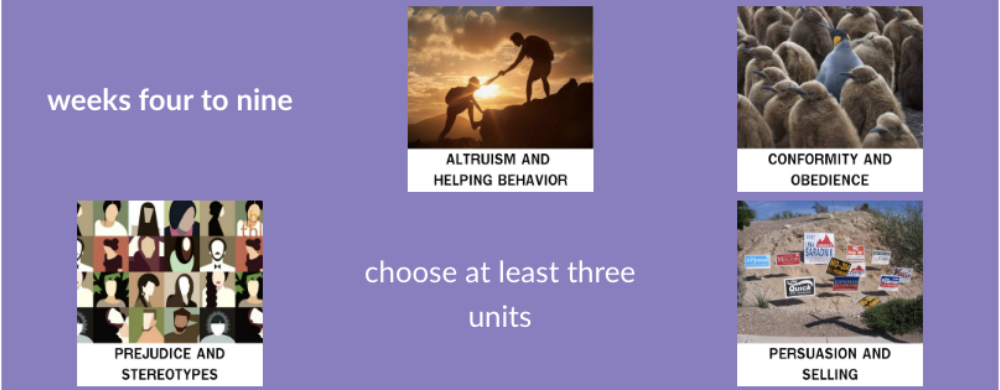4 Advantages of Using Student Process Portfolios
Student Portfolio Ideas to Drive Effective Learning
When you imagine creating a student portfolio, what do you see?
Perhaps you envision a careful curation of final products: a collection of excellent work that’s been revised, polished, and prepared for presentation. But, is emphasizing only the final product really the best way to drive learning?
What if we leveraged portfolios to capture the process of learning in addition to the products? At GOA, process portfolios are emerging as a tool in the push toward competency-based learning. The key difference between these portfolios and others is that the evidence of growth comes from process artifacts (discussions, project plans, working drafts) rather than a sampling of summative assessments.
As we begin working with students on process portfolios, we’re already seeing four compelling ways they’re working.
1. Process portfolios are a growth mindset’s best friend.
The connection between long-term learning and helping students develop a growth mindset is at the heart of Carol Dweck’s Mindset. The ideas that our abilities are plastic (rather than fixed) and that we can always improve suggests we should highlight how students’ effective efforts lead to growth.
Student reflection is critical to this work, and thus a foundational element of a process portfolio. GOA Filmmaking teacher Brendan Gill of Catlin Gabel School asks students to use Google Slides as process portfolios. Students synthesize feedback from Brendan and classmates, articulate themes in their own work, and establish an intention for upcoming assignments (see the example below from Amelie of Think Global School).

The focus is squarely on what students have learned about themselves, about their process as filmmakers, and about their next steps. Students post their portfolios weekly and comment on one another’s progress, focusing on moving forward as a community of learners.
2. Process portfolios unlock possibilities for student-driven, personalized learning.
If students’ process portfolios are based on their movement toward mastery of a series of skills or competencies, it becomes easier to design courses in which students choose their own pathways.
In GOA’s Arabic program, Ala Hamdan, Rania Al Natsheh, and Matt Westman of King’s Academy in Jordan work with 60 students at various levels of Arabic. Students are invited to add reflections to their process portfolios periodically and to choose the GOA core competencies they want to reflect and be assessed on. The result is that the reflections (and students’ grades) are aligned to their personal goals and their individual Arabic competency, which allows our most driven Arabic 1 students to push deep into the Arabic 2 curriculum by the end of the year.
Read more on rethinking time in our Arabic classes
The same is true in Social Psychology, taught by Chris Stapel and Natalie Broderick (Hong Kong International School). Using parallel units, students choose the topics that interest them and set their own competency goals. At any given moment, students might be in one of four different units.

The portfolio assessment in the classroom follows this process:
- The students begin each module by choosing their personal growth goals from among a list of skills or competencies that the course aims to impart.
- At the end of the module, they reflect publicly on their progress toward those goals and submit their portfolios to the teacher.
- Teachers seek to provide actionable, outcomes-based formative feedback and time to digest and apply it.
- Students take their teachers’ feedback and use it to set goals and reflect on their progress over time.
Using the process portfolio pivots the focus away from specific content and summative assessments and toward the development and transfer of key skills over time, freeing the students to pursue the content that most interests them.
3. Process portfolios peg grades to skills developed rather than to assignments completed.
If grading amounts to a glorified bean-counting exercise (5 points for turning in this assignment, 10 points off that assignment because it was a day late, half-credit for not showing your work, etc.), students are bound to focus undue attention on the beans as opposed to the learning.
Using process portfolios makes it natural to base grades on the quality of the students’ submitted evidence and reflection on their learning rather than their compliance with instructions. Carey Pohanka, GOA’s Advocacy teacher from St. Christopher’s School, has experimented with a system that leverages Google Forms to have students submit evidence of learning to their portfolios. It is the entire process portfolio rather than the individual daily assignments that are graded.
If the only thing that counts towards a grade is the teacher’s (and the student’s) assessment of the development of key competencies via that portfolio, one can’t help but focus grading on what’s important.
4. Process portfolios can lead to more equitable grading practices.
Several GOA teachers have used process portfolios to support a move toward rolling grades. The essential shift in both competency-based and standards-based grading is relatively simple: replace the assignment labels that run across the top of your typical gradebook with the skills or competencies you want students to develop, then give students multiple opportunities to submit evidence of development of those skills.
A learner might earn a 3/5 on a given skill in October, but that particular grade will improve as her skills develop throughout the semester. This approach can dial down the anxiety around early assessments and support a culture of reassessment focused on growth. What’s more, moving toward rolling competency-based grading has significant implications for equity. With rolling competency-based grades, your grades will reflect more clearly what students are taking away from your course, rather than dwelling on the shortcomings with which they may have started the course.
In the end, the purpose of competency-based learning is to help students develop the skills necessary to become lifelong learners. Using process portfolios helps guide students towards documenting and reflecting on how and why they learn, not just what they learn.
How do you leverage portfolios in your own work? Does a focus on process over product help engage students in learning? Let us know on Twitter. Learn more about GOA’s work on competency-based learning in this series of articles, or contact us for more information.
